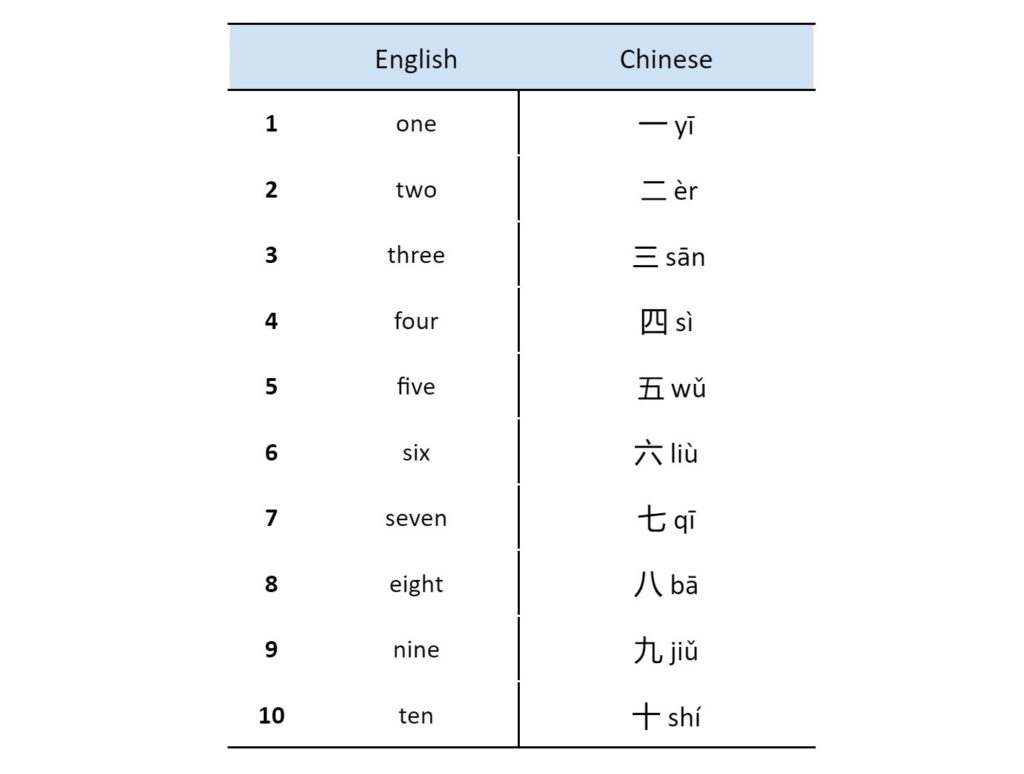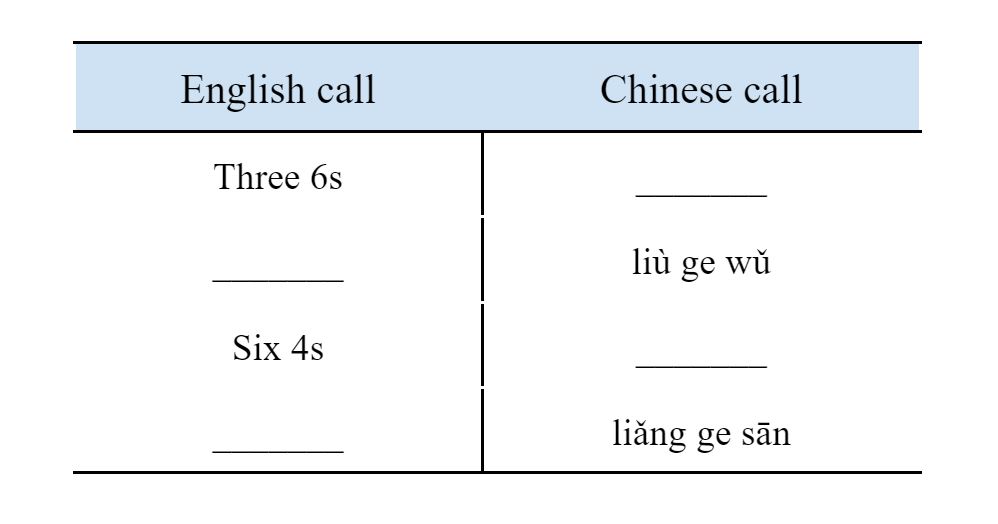Shhka-shhka-shhk.
Step into China’s nightlife, and this is the sound you’ll hear. Laughter bounces around the tables, occasionally interrupted by the venue’s favorite band. They play every night, again and again, but no one seems to mind. Everyone’s focus is on one place—the hiss and rattle of dice. Fortuitous ivory bouncing in a felted cage.
Shhka-shhka-shhk.
This is Liar’s Dice. A game of bravado and numbers. A game that—despite its simplicity—captured a nation’s attention. It’s fun, fast-paced, and (if you’re the legal drinking age) a superior bar game. The vocabulary is simple, too—barely more than one through ten.
In other words, it’s the perfect game to learn Chinese numbers.
Why is Liar’s Dice so good for learning?
Simply put: Focused vocabulary, constant repetition, and visual aids.
Every time you play, you’re using a small set of numbers again and again. The dice themselves show what you’re listening for. And using your hands to count is the standard in a noisy bar. All these factors create the perfect conditions for immersive learning.
With Liar’s Dice, you can learn (or practice) Chinese numbers without a word of English. This works with native Mandarin speakers, fellow learners, or even friends and family with no interest in the language. All you need is someone who’s willing to play.
That said, things will go a little more smoothly if you learn the rules of the game first.
Liar’s Dice: How to Play
Game Objective: Correctly call an opponent’s bluff and they drink; get it wrong and you drink!
What you need:
- 2+ players
- 1 dice cup* per player
- 5 six-sided dice per player
- Your drink (or other penalty) of choice
*Plastic cups work too! Just make sure they’re not see-through.
 Basic play
Basic play
To begin with, every player should have 1 cup and 5 dice. Next, you sit in a circle. Turn the cups upside down so they cover the dice.
A round begins with everyone rolling the dice inside their cup. Once those dice are nice and rolled, peek inside—but don’t let anyone else see!
If none of your rolled dice show the same number (you have no pairs) or one die lands on top of another, this is a 顺子 “shùn zi”. Typically, you announce “shùn zi” and reroll.
The first player calls out a set of dice. This combination includes a number of dice and their shared face value, e.g., “three 2s” or 三个二. A call of “three 2s” declares there are at least three dice showing the number 2.
But here’s the twist! Players base their calls on every rolled dice on the table, including what they can’t see in other players’ cups. So every call, including the first, is really based on what the caller thinks is on the table.
Play moves clockwise from the first player. The next calls out a second set of dice, increasing either the quantity of dice or face value of the dice, e.g., “three 3s” or 三个三.
Continuing clockwise, each subsequent call again increases either the quantity of dice or the face value of the dice (or both!). The quantity of dice may never go down. However, the face value may go down if the quantity of dice increased from the previous call.
Eventually, someone will bluff—either by choice or necessity. For example, someone might call a set of “twelve 6s” or 十二个六 when there are barely that many dice. When this happens, any player may say “open” or 开.
Everyone then opens their cups. All the dice are checked to see if the last set called does indeed exist. For example, if someone had called “twelve 6s,” then there must be at least twelve dice showing the number 6 for the call to be accurate.
If the call was true, the person who said “open” loses and must take a drink. If the call was incorrect, however, the bluffer loses and must take a drink.
In some ways, it’s a lot like the card game Cheat (or as you might know it—BS). However, you can never be sure if the call you’re making is accurate or not, and at the end of a good round, the tension gets far higher than any game of Cheat you’ve ever played.
 Making a Call
Making a Call
Okay, you rolled your dice and took a peek. How do you make a call?
Traditionally, the oldest player makes the first call of the first round. In every round after the first, the loser of the previous round goes first.
There are two numbers you have to think about. The number of dice and the number on the dice. Every call will have those two elements. You say the quantity of dice first and the face of the dice second. Some calls you might hear in a game include “four 4s,” “six 2s” or “seven 3s.”
Since this is a bluffing game, you can call almost any two numbers you want. However, the second number will never go above 6, since a die only has 6 sides. And the first number shouldn’t go above the total number dice on the table.
Typically, players will go at it cautiously, using the smallest quantity of dice they’re legally allowed in a call. Sometimes, however, it’s a good idea to bet big and force your opponent into an easily called bluff. Regardless, you’ll often want to base your calls on the dice you actually have. Take a look at this hand.
You could start by calling “three 4s” or 三个四. This means there are a minimum of three dice that have the number 4 showing. In this case, you have exactly three in your own hand, so the call definitely isn’t a bluff.
Remember, though. You’re playing every single die on the table, not just your own. Calling “three 5s” or 三个五 might look like a bluff from your perspective, but chances are, there’s at least two other fives on the table. It’s probably a safe call.
Importantly, 1s are wild! You can use any 1 in your hand—and in everyone else’s hands—as any number you want.
Here, you have both three 5s (三个五) and four 6s (四个六) in your own hand, since the 1s are wild.
In normal play, 1s can represent any number except, ironically, 1! You can only use 1s as themselves in the first call of a round. If that happens, 1s are no longer wild for the remainder of the round.
—You can safely ignore this rule while learning the game, however.
For a while, figuring out how many dice there are will seem like complete guesswork. If you play often enough, though, you’ll learn what’s likely based on the number of players. Like in poker, you can also glean information from other players’ habits and tells.
 Legal Calls and Illegal calls
Legal Calls and Illegal calls
Differentiating between a legal call and an illegal call can be the hardest part of the game to start with, but it becomes second nature once you’ve figured it out.
The first call follows a simple rule to keep the game moving. The quantity of dice must be at least one more than the number of players. So, if there are two players, the first call must have three or more dice in it.
Every call after the first follows a slightly more complicated rule. One of the two numbers in every subsequent call has to go up, and the quantity of dice can never go down.
Let’s say the person right before you called “four 3s” or 四个三.
That first number, the “four,” can never decrease. It must go up or stay the same.
However, if you decide to raise the number of dice, the second number (the number on the dice) can be anything you want, even a number that is less than the previous call.
Raising the quantity of dice
Previous call was “four 3s”or 四个三
You are allowed to keep the quantity of dice the same. If you do that, however, the second number must increase.
Raising the face of the dice
Previous call was “four 3s”
Initially, this will feel complicated. Once you’ve played around a bit, though, the rule becomes so easy you won’t even have to think about it.
 Calling a Bluff
Calling a Bluff
As a round progresses—and the calls get higher and higher—a player will inevitably be forced to bluff. When someone says there are more 5s (or any other number for that matter!) on the table than you think is likely, that’s a good time to say “open.”
When this happens, all players open their cups, not just the person whose likely-bluff you called out. All the relevant dice should be counted. So, if someone had called any number of 5s, count all the dice on the table showing the number 5.
Remember, though, 1’s are wild and should be counted too!
If there are less 5s than the number called, the bluffer loses. If there are at least that many 5s, the call was not a bluff. Instead, the person who said “open” or 开 loses.
For example, let’s say someone calls “eight 5s” or 八个五 and you think that’s a bluff. After the cups are open, you see that there are only seven (including 1s, which are wild). You were right, and your opponent loses the round.
In an alternate reality, however, there were eight 5s—maybe even nine or ten. In that case, you were wrong. As the person who said “open,” you lose the round.
 Ending a round, beginning the next
Ending a round, beginning the next
Whoever lost the round, takes a drink! It’s as simple as that. While you’re still in the process of learning, it might help to take a sip rather than a shot, but the choice is yours.
This ends the round. Every player then puts the dice back under their cup and rerolls them, restarting play exactly how it began. Whoever lost makes the first call of the next round. All the following calls are made going clockwise, as before.
At the end of a round, it’s a great idea to state the quantity of relevant dice you have in Chinese. Not only will this speed up your language acquisition, it’s a lot easier than squinting across the table to see everyone else’s hand.
If you prefer an alcohol-free version of the game, the loser can instead remove one die from their hand. This keeps the odds of the game in a state of flux, preventing play from becoming too boring or predictable.
 Using Chinese to Play!
Using Chinese to Play!
Once you have a basic grasp of the rules, you can start incorporating Chinese into the game. As mentioned before, it’s entirely possible to learn your numbers while playing—especially if you have a more experienced Mandarin speaker to play with.
Don’t fret if all your friends are beginners, though. The game works just as well as a group study tool. Keep a crib sheet with the Chinese vocabulary on hand as you play and substitute the English words with the Mandarin equivalents. As you practice saying and hearing the numbers, you’ll need to refer to the crib sheet less and less.
No matter who you’re playing with, the key is showing calls with your fingers alongside saying them aloud. If you want to call “three 5s,” for example, flash three fingers when you say 三 “sān” and then five when you say 五 “wǔ.”
If you’re feeling adventurous, look up the Chinese hand gestures used to count to ten on one hand. Learn how to do this and you’ll be right at home in any Shanghai bar.
This not only ensures that everyone can understand what’s being said, but also strengthens your brain’s recognition of the words through visual aids. Looking at other players’ dice, and your own, at the end of a round only helps reinforce your learning.
If you really want to impress your friends, you can teach them how to play the game in Chinese. Teaching someone who doesn’t know the first thing about the language is entirely possible over just a few drinks.
Simply use Chinese yourself and show the numbers on your hand as you should be doing anyway. As the game goes on, encourage your friend to start using Mandarin, supplying the words as needed. Teaching others goes a long way in reinforcing what you’ve learned and deepens your understanding of the language.
Liar’s Dice: Vocabulary and Grammar
Vocabulary: Numbers 1–10: yī, èr, sān, sì, wǔ, liù, qī, bā, jiǔ, shí
Measure word: ge 个
Grammar: [number] + ge + [number]
Vocabulary: 1–10
Making calls in Chinese is simple. First, you need to replace the numbers with the Mandarin equivalent. Take a look at the table below for the numbers you’ll need for most games.
If you want to say six, you instead say liù. If you want to say eight, you say bā. Pretty simple right? However, if you wanted to say “six 6s,” you wouldn’t say 六六s “liù liùs.” Mandarin doesn’t quite work that way.
Instead, you would say 六个六 “liù ge liù.”
Vocabulary: Measure words
Measure words are used to indicate quantities of things. The word 个 “ge” is the most common measure word in Chinese, and it’s the only one you need to know for Liar’s Dice. To indicate the quantity of something (like dice) you put the number first and follow it with 个 “ge.”
When you say “liù ge,” for example, you are saying there are six of something. 六个六 “Liù ge liù” simply means there are six 6s.
Watch out for two, however! When you are talking about the 2 on the face of the dice, you say 二 “èr.” When you want to say there are two dice, you instead say 两个 “liǎng ge.” Two 2s, therefore, is 两个二 or “liǎng ge èr.”
While there are many measure words in Chinese, the only one you need to know for Liar’s Dice is 个 “ge.” Luckily, it’s something of a catch-all measure word, which means what you learn playing the game can be used in almost any other situation.
Grammar: Counting dice
The complete structure for making a call in Chinese is [number] + ge + [number].
This expression indicates how many dice of any one number you are calling. You say the number of dice in Chinese first, followed by ge, followed by the number showing on the face of the dice.
Six 5s would be 六个五 “liù ge wǔ.” Seven 2s would be 七个二 “qī ge èr.” Can you figure out what “three 6s” would be? Take a look at the following table and see if you can translate calls from one language to another.
Practice calls
Fill in the blank!
The Mandarin used to tell another player to open their cup is 开 “kāi.” Give a try saying that if you want a fully fluent experience.
Once you’ve figured that out, you’re more than ready for a game. Of course, the best way to learn is often by doing. If you can, grab a friend who’s up for playing while you get a handle on the Mandarin and have at it. You can even get some dice and a cup and practice on your own. You only have to grasp a small set of vocabulary to play the game fluently. Then, the next time you’re headed to a bar, KTV or a party, think about bringing some dice. The only thing left is impressing your friends.

 Basic play
Basic play Making a Call
Making a Call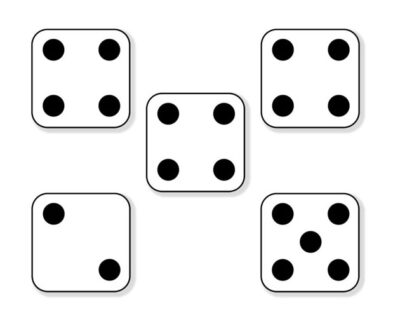
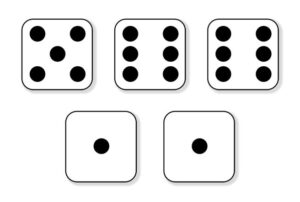
 Legal Calls and Illegal calls
Legal Calls and Illegal calls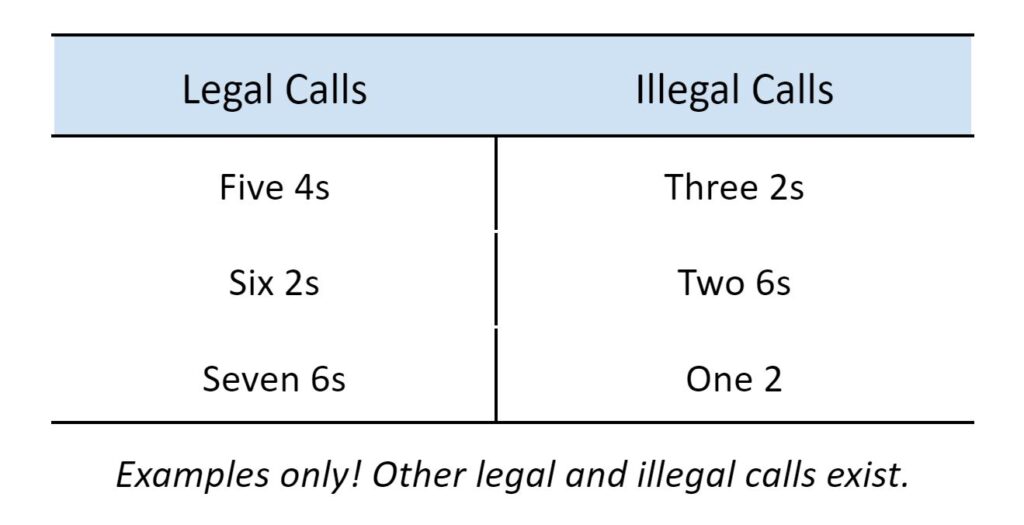
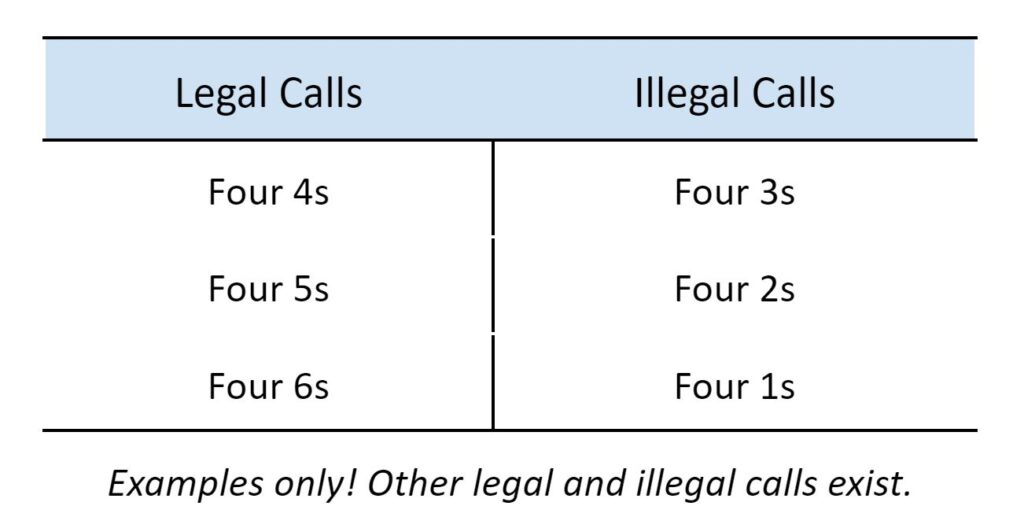
 Calling a Bluff
Calling a Bluff Ending a round, beginning the next
Ending a round, beginning the next Using Chinese to Play!
Using Chinese to Play!